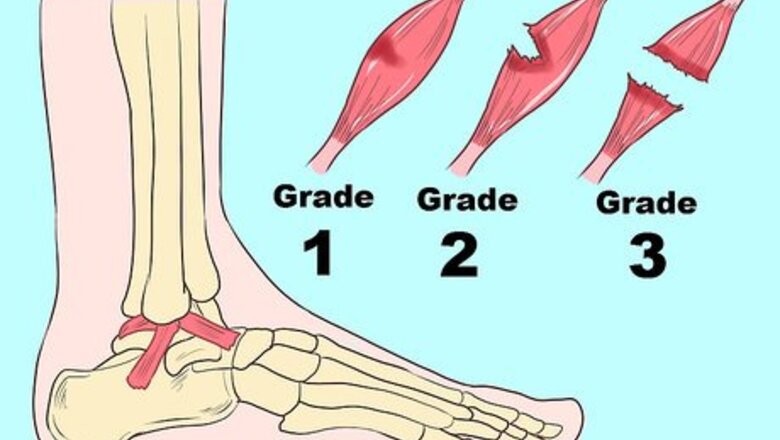
views
X
Expert Source
Joshua Grahlman, PT, DPT, FAFSPhysical Therapist & Entrepreneur
Expert Interview. 8 September 2020.
Using Initial Treatments

Determine the severity of the sprain. Sprains come in 3 grades. A grade 1 sprain has slight tearing of the ligaments, and will result in mild tenderness and swelling. A grade 2 sprain has partial ligament tearing, and moderate tenderness and swelling. A grade 3 sprain is a complete tear of the ligament, and will have significant swelling and tenderness around the ankle. A grade 1 sprain usually does not require medical attention. Usually, a grade 2 sprain heals well at home with proper care. A grade 3 sprain should almost always be seen by a doctor to make sure there is no other damage to the ankle. Home treatment and management for all 3 grades is the same, but the higher the grade the longer it will take for the ankle to heal.

See your doctor for severe sprains. Moderate sprains do not normally need a doctor, but some of the more severe ones might. A grade 1 sprain may not require any medical attention, but grade 3 should be seen by a doctor. If your sprain prevents you from comfortably putting weight on your ankle for more than a day, or if you experience severe pain and swelling, call your doctor to make an appointment as soon as possible.
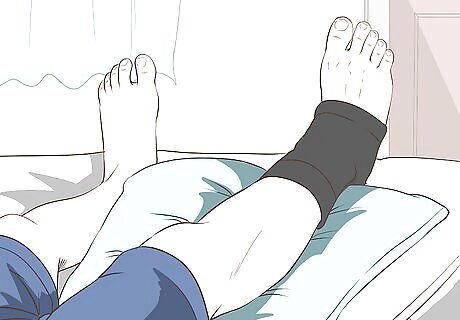
Rest your ankle until the swelling goes down. Avoid walking on your ankle as much as possible until the swelling goes down. Try not to put weight on the ankle either. If necessary, use crutches to help distribute your weight and keep your balance when you walk. Take turmeric topically and internally to reduce inflammation. Arnica gel can be found at most pharmacies and can help with bruising. However, do try to move your ankle as much as possible without stressing the injury or putting weight on it. For instance, while you're sitting, you might gently rotate your ankle in circles or trace the alphabet with your foot. You may consider using an elastic ankle brace as well. Braces add stability and can help control swelling while the ligaments are healing. Depending on the severity of the sprain, you may need the brace for 2-6 weeks.
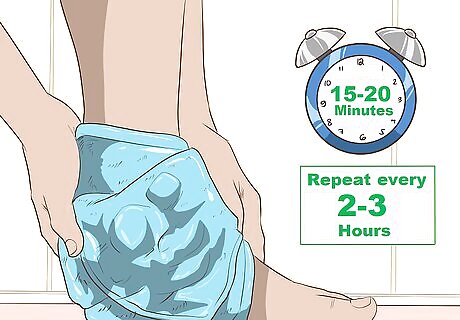
Ice your ankle to limit swelling and dull pain. Wrap a handful of ice, an ice pack, or a bag of frozen peas in a dish towel or a thin piece of cloth. Apply the ice compress to the injured ankle, and hold it there for 15 to 20 minutes. Repeat this every 2-3 hours for as long as swelling persists. Apply ice to your ankle even if you plan to go to the doctor. Ice limits inflammation, especially during the first 24 hours of the injury. Applying ice to any sprain will help reduce overall swelling and bruising. Alternatively, you can fill a bucket with ice water and immerse your foot and ankle. Leave the ice off at least 20-30 minutes between applications. It can both numb pain and reduce swelling. Too much exposure to the ice could lead to frostbite. If you have diabetes or circulation issues, talk to your doctor before applying ice.
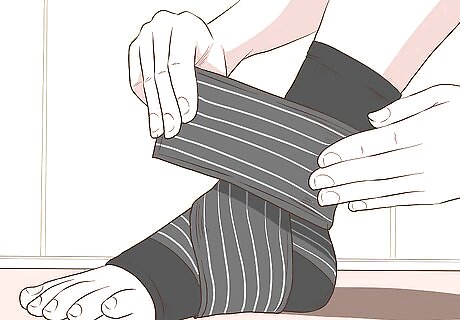
Compress your ankle with an elastic bandage. Use a compression bandage, an elastic bandage, or an elastic brace to help manage swelling. Wrap the bandage around the ankle and foot, and secure it with metal fasteners or medical tape. Be sure to keep the wrap dry by removing the bandage when you are icing your ankle, and reapplying it after you remove the ice. Wrap an elastic bandage from your toes to your mid-calf, using even pressure. Keep the bandage on until the swelling subsides. Loosen the wraps if your toes turn blue, feel cold or begin to feel numb. You don't want the wrap to be too loose, but you don't want it to be too tight, either. You can also get slip-up or pull-up style bandages and braces. These are often beneficial because they ensure the even application of pressure without cutting off circulation to your foot.
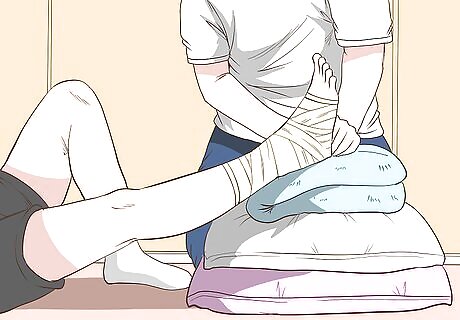
Elevate your ankle above the level of your heart. Sit back or lie down and use an ottoman or pillows to elevate your ankle. Keep your ankle elevated for 2 to 3 hours a day until your ankle stops swelling. Elevation will help reduce swelling and bruising.

Take an over-the-counter pain reliever. Over-the-counter pain medications such as aspirin, ibuprofen or naproxen sodium are typically strong enough to help manage the pain and inflammation that goes with a sprained ankle. Use the packaging to help you determine the correct dose, and take it as recommended to manage any pain and swelling.
Recovering from the Sprain

Perform exercises to stretch and strengthen your ankle. Once your ankle is healed enough to move without pain, you might consider doing some exercises to help strengthen the ligaments. The type of exercises and the number of sets will depend on the severity of the sprain, so follow your physical therapist's recommendations. Some useful exercises may include: Slowly rotate your ankle in small circles. Start by doing a set clockwise. Once you’ve completed a set going clockwise, do another set going counterclockwise. Try to trace the alphabet in the air with your toes. Tie a resistance band around something sturdy, then wrap it around the back of your ankle. Pull your foot in different directions against the resistance of the band. This is a good exercise while your ankle is swollen because you don't have to put your foot on the ground. Sit straight and comfortably in a chair. Set your injured foot flat on the floor. Then, shift your knee from side to side, slowly and gently, for about 2-3 minutes, keeping your foot flat on the floor the whole time.
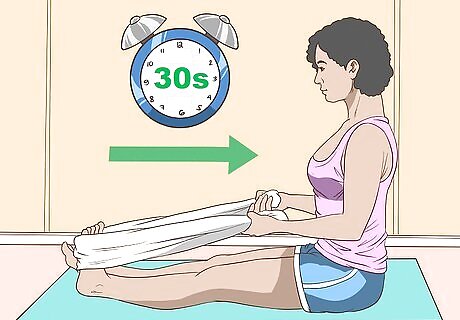
Stretch to gently increase ankle flexibility. After an ankle sprain, the calf muscles often get tight. It is important to stretch these to get your normal range of motion back. If you don't, it could lead to further injuries. As with strengthening exercises, be sure to consult your doctor before performing any stretches to make sure your ankle is healed enough to properly perform the motions. Sit on the floor with your leg extended out in front of you. Wrap a towel around the ball of your foot. Then, try to pull the towel toward your body while keeping your leg straight. Try to hold the stretch for 15-30 seconds. If the stretch is too painful, start by holding it for just a couple of seconds and gradually increasing your time. Repeat the stretch 2 to 4 times. Stand with your hands on a wall and place your injured foot about a step behind your other foot. Keep your heel on the floor and slowly bend your knee until you feel a stretch in your calf. Hold the stretch, breathing slowly and evenly, for 15-30 seconds. Then, repeat the exercise 2-4 more times.

Work on improving your balance. Balance is often affected following an ankle sprain. Once your sprain is healed, try some exercises to help restore your balance and prevent any future sprains or injuries. Purchase a wobble board or stand on a firm cushion. Make sure that you position yourself near a wall in case you lose your balance, or have someone else spot you while you're working on keeping steady. Try to hold your balance for 1 minute at first. Gradually increase your time as you get more comfortable. If you don't have a cushion or a wobble board, then you can stand on your injured foot and lift your other foot off of the floor. Extend your arms out to your side for balance. Gradually increase the activities you can do before you try to support your weight on your ankle. Once it doesn't hurt to stand on your ankle, start doing standing exercises like heel raises, rolling your foot in and out, and eventually pivoting on that foot.

See a physical therapist. You should consider a physical therapist if your ankle is taking a long time to heal. If self-treatment and exercises aren’t helping, a physical therapist may offer some alternatives to help you recover.
Preventing Ankle Sprains
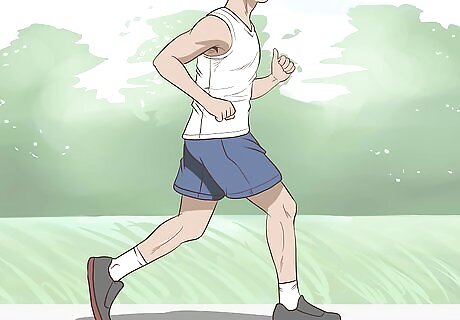
Warm up before you exercise or exert yourself. Be sure to warm up with stretching and cardiovascular exercise before you perform any strenuous physical activity. If you jog, for instance, start with a leisurely walk to warm up your ankle joint before you up your pace. If you are prone to repeated ankle injuries, you may want to consider wearing an ankle brace while you exercise. When you're learning a new sport or exercise, be careful not to do it at full intensity until you're fully conditioned for the activity.
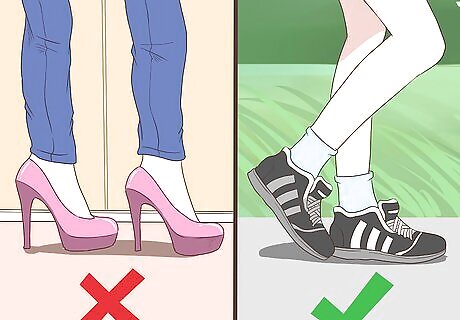
Wear appropriate shoes. Some people find that high-top sneakers help to stabilize their ankles while they are exercising. No matter what your activity, wear shoes that fit well and are comfortable. Make sure that the soles aren't so slick that you risk falling, and avoid high heels in situations where you will be standing a lot or walking frequently.

Keep doing ankle stretches and exercises. Even when your ankle is fully healed, you should continue with your ankle stretches and exercises. Do them daily for both ankles. This will help keep them strong and flexible, preventing any future injury. You can even incorporate ankle exercise into everyday life. Try standing on one leg while you are brushing your teeth or doing other mundane chores.

Tape your ankle when you experience stress. Taping your ankle when you experience minor stress such as a sore joint or a twist can help provide you with extra support while still allowing you to be mobile. You wrap the ankle tape in much the same way as you do a bandage, but there are a few extra steps you should take first. Put heel and lace pads on the top and backside of your ankle before adding the under dressing. Wrap the whole area in pre-wrap. Wrap the top and bottom of the pre-wrapped areas with athletic tape to create anchors. Apply stirrups by taping a U-shape from one side of the ankle to the other, going under the heel. Wrap the rest of the pre-wrapped area in tape, working in a triangular pattern that goes around the ankle and under the arch of the foot.















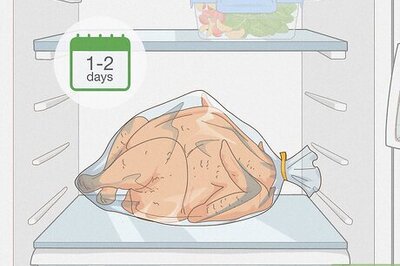
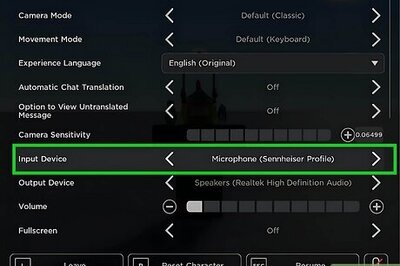


Comments
0 comment